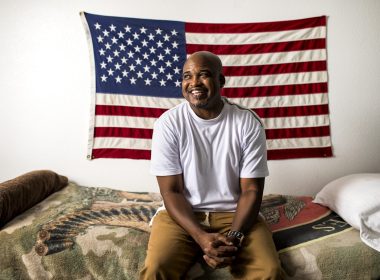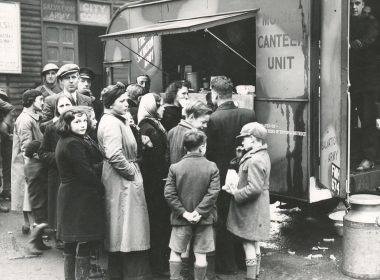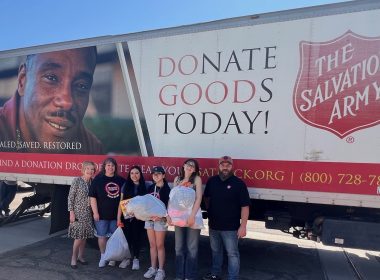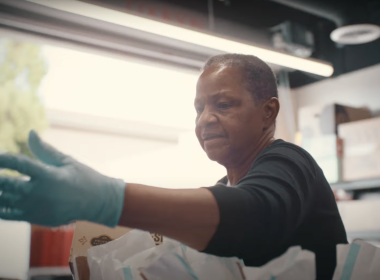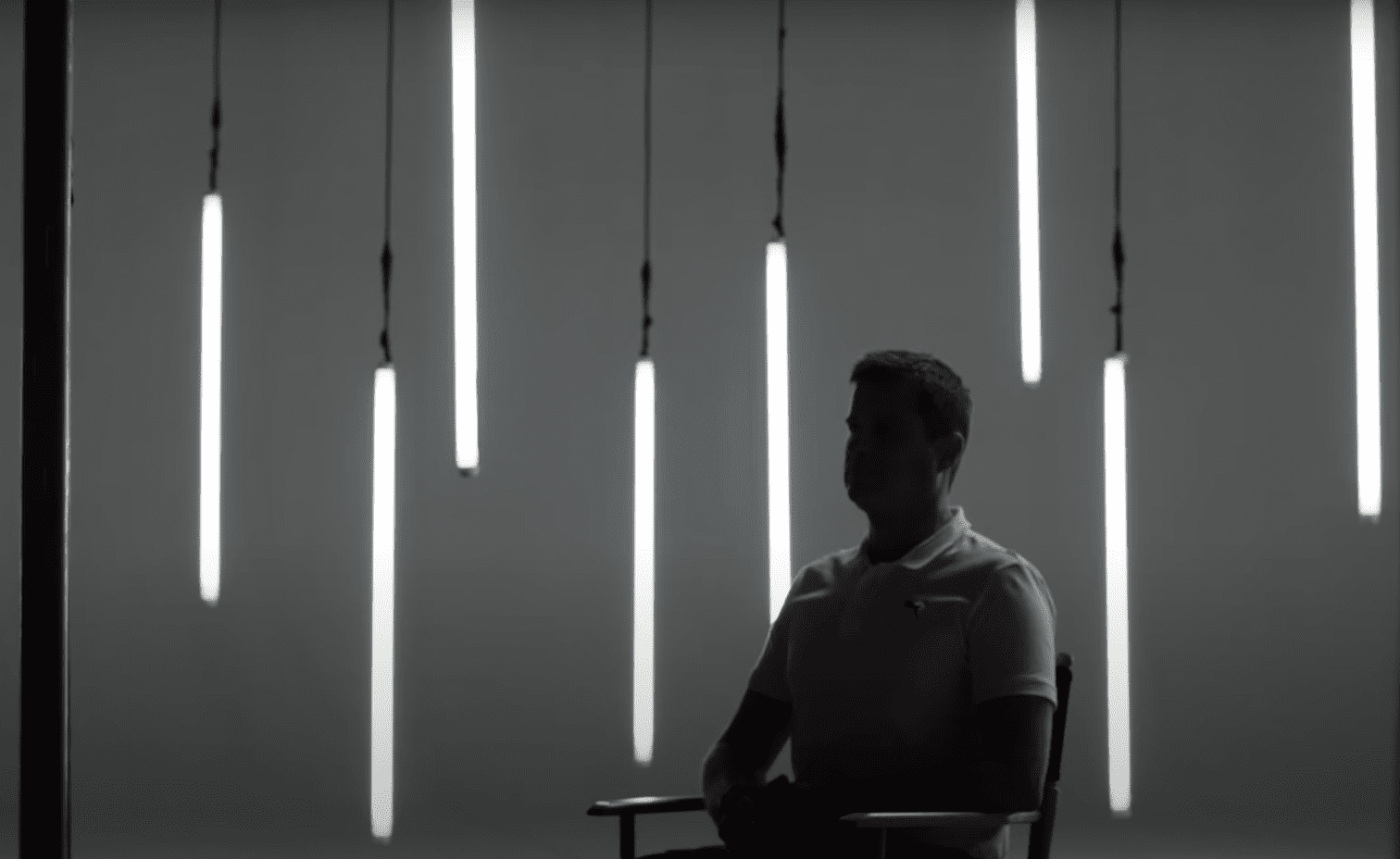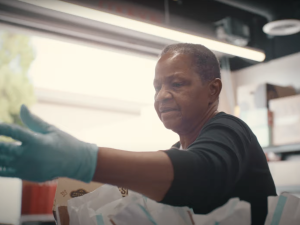The Salvation Army Bell Shelter in Los Angeles, California, has implemented a new tool to help people get back on their feet: Neurofeedback. An emerging & non-invasive treatment, Neurofeedback helps treat the effects of Post Traumatic Stress Disorder (PTSD) and substance abuse.
Watch the video to see some of the incredible stories of change happening at the Bell Shelter, and to learn how neurofeedback works, and why it’s been so effective.
The Salvation Army would like to thank Homecoming for Veterans and EEG Info for their generosity in helping establish the neurofeedback clinic at the Bell Shelter.
Below is a transcript of the video edited for readability.
Paul Wager, clinical director at The Salvation Army Bell Shelter: Post-Traumatic Stress Disorder is a psychiatric disorder brought on by exposure to some kind of severe trauma.
Ben Miller, neurofeedback coordinator at The Salvation Army Bell Shelter: It’s when the body and mind are unable to cope with a trauma, they tend to get stuck in a fight or flight mode.
Paul Wager, clinical director at The Salvation Army Bell Shelter: We see a lot of depression, severe anxiety, panic attacks, nightmares. We relate PTSD a lot to veterans and the battlefield, which, of course, the genesis is on the battlefield. However, there are lots of ways to get PTSD.
Duane Mackey: I was abused pretty badly when I was young. I had a single mom, with six kids. She was very, very violent when it came to discipline. So I was always in the hospital. Broken bones, broken hips, broken arms. She locked me in the basement once for a whole summer. For a whole summer. I was eleven years old. I couldn’t talk for a long time because I stuttered really bad and I wet the bed, and so that was her way of punishing me. She was cruel. She was really cruel.
Dillion Toscano: I didn’t like what my dad did, I didn’t like how he raised me, I didn’t like how he beat me. He was a drug addict. An alcoholic. I mean, all of it. That really affected me.
Ben Miller, neurofeedback coordinator at The Salvation Army Bell Shelter: I remember having a client who was woken up in the middle of the night to be molested by her uncle. For her, sleep’s not a safe place. I recently had a gentleman who at the age of five, woke up to his house on fire, and his brother was screaming because he was on fire. So his reoccurring dream is waking up to the scream of his brother being on fire. Just imagine getting 2 to 3, to 4 hours of sleep every night and then trying to function. It would be almost impossible to hold down a job.
Paul Wager, clinical director at The Salvation Army Bell Shelter: It’s natural to do anything you can do at that point, to be able to sleep and not feel anxious.
Dillion Toscano: I’ve had a drug addiction for 25 years. Methamphetamine, alcohol, marijuana, psychedelics, you name it. I was diagnosed with ADD, ADHD, bipolar, schizophrenia. I mean, a lot of this stuff, and I have no idea which ones were self-induced psychosis because of my addiction. I have no idea.
Reuben Vargas: I had a really big drug problem. What the stuff does to the brain itself, it loses your ability to feel happy. And then you’re thinking all these crazy thoughts. And then that’s when, like, the really big anxiety issues happen. “That guy knows I’m high” You can’t get it out of your head. “They know. Everyone knows.” The only way I’d be able to sleep…”I’ve been up for too long” …is if I pass out due to exhaustion, it’d be like three in the morning, and I’m just like…Finally, four in the morning, I’d pass out, wake up at ten, and go, “Yay, I slept,” and then try to function throughout the rest of the day, every day of the week. I’ll just keep doing that, you know.
Dillion Toscano: When I first came to The Salvation Army, I was getting about two hours of sleep a night.
Paul Wager, clinical director at The Salvation Army Bell Shelter: The Salvation Army Bell Shelter is a very large homeless shelter. Our approach is, let’s help you get healthy, physically, spiritually, psychologically. The primary goal is to help obtain permanent housing.
Dillion Toscano: At the time when I got in there, I think I had six months sober. But I realized soon after that, that was just sobriety. That wasn’t recovery. And there’s a huge difference. Sobriety is just being sober every day. Recovery equips you with the tools that Bell Shelter was giving me. Anger management, coping skills, parenting classes. Once I realized I was in control of my feelings, I was now in control of my recovery. And then came neurofeedback.
Ben Miller, neurofeedback coordinator at The Salvation Army Bell Shelter: Neurofeedback is an opportunity for the brain to see its activity on a moment-by-moment basis. We’re just recording the energy that the neurons are making as they fire. We put this through a digital amplifier and then in through our program. All we want them to do is look at the screen. As the brain is able to see itself, the screen will get bigger, smaller, fade over. The sound will go up or down. The brain recognizes that the dance it’s seeing, it’s doing, and it’s able to regulate itself from there. The client doesn’t need to do much during the treatment, except sit and relax. Let your brain do the work. Your brain gets a chance to see what it’s doing, and it will make the right corrections to heal in the right way.
Duane Mackey: I could see the difference immediately. It gives you a sense that you have some kind of control over the way you think, and the way you feel, and the things that you focus on, you know, because ultimately that’s what’s causing the problem, is focusing on the wrong things, staying in the past, walking around in fear, you know. That neurofeedback gives you a chance to see it, to see yourself taking control of yourself.
Reuben Vargas: It’s something else to wake up and have energy that just sort of stems naturally. My relationship with my family is getting better and better. It’s fun to be able to look at my nieces and nephews in the eyes, and be like, yeah, you’re doing great, you know. Life’s just better all around, it’s simple.
Paul Wager, clinical director at The Salvation Army Bell Shelter: The nice thing about neurofeedback is as it diminishes PTSD symptomology, the client also feels less need or desire to self-medicate, because they’re feeling so much better. So it works simultaneously on what we call the Dual Diagnosis population; folks with PTSD and say, alcoholism. It gives a lot of us in the field hope. When you’re fighting this monster of addiction, anything that works is incredibly valuable.
Dillion Toscano: Neurofeedback is a gift. This recovery center is a gift. These individuals who come in here and teach us these things from their heart, it’s a gift. This past February, State of Arizona calls me up, says, “We have your son.” I’ve been looking for him for, like, three years now. They were about to put him up for adoption. And I have no doubt in my mind that it was God, because if that had happened a year before, there’s no way I would have been able to step up to the plate and take him in. But now I can. If that’s not God working in my life, then I don’t know what is.
Paul Wager, clinical director at The Salvation Army Bell Shelter: You can’t help but smile and just feel, you know, an incredible sense of joy, because you know that this is a game changer for this person, for the rest of their life.
Ben Miller, neurofeedback coordinator at The Salvation Army Bell Shelter:The reason it’s so important for me, is because I do, I see…I see it get passed down from generation to generation. I see a dad who was beaten or molested when he was younger, do it to his own children. If we can help one dad not pass it down to a child…to me, it would make it worth it if we could do that.
For more information on the Bell Shelter in Los Angeles, please visit bellshelter.salvationarmy.org. If you or someone you know needs help, contact The Salvation Army at salvationarmyusa.org
Do Good:
- See more videos like this in our video feed.
- Are you a Do Gooder, someone who cares about bringing goodness into the life of your family and community? Subscribe to The Do Gooders Podcast to be inspired by those doing good and find tangible tips for simple actions you can take today.
- Did you know The Salvation Army served more than 23 million Americans last year fighting hunger, homelessness, substance abuse and more—all in a fight for good? Where can you help? Take our quiz to find your cause and learn how you can join in today.


